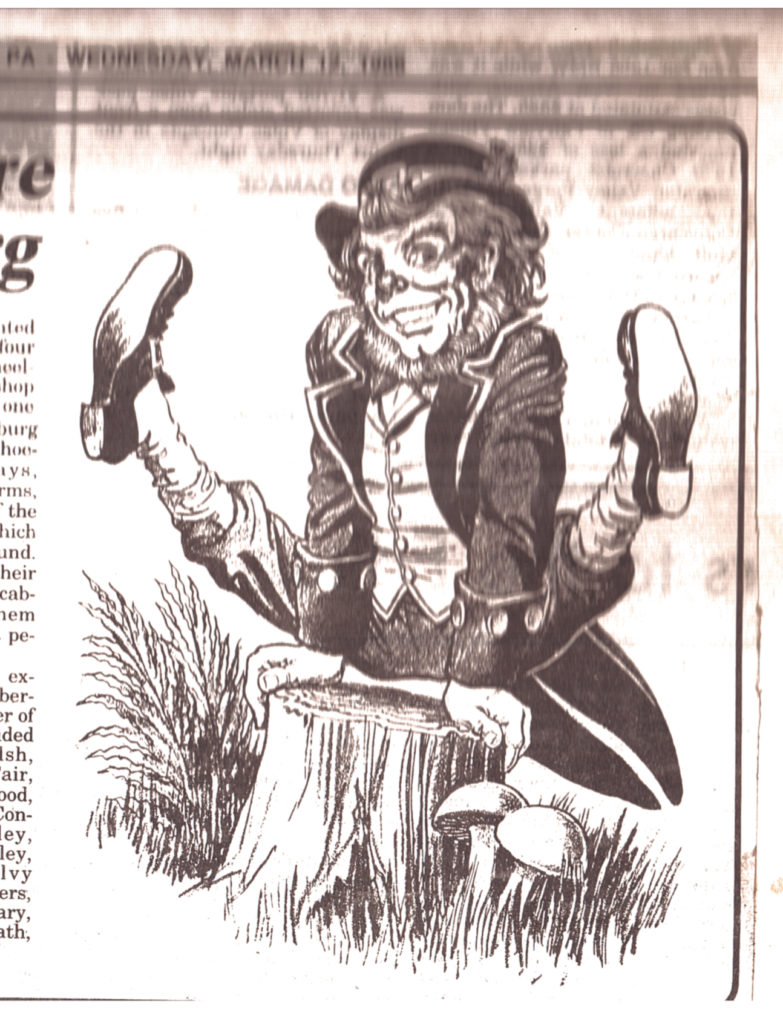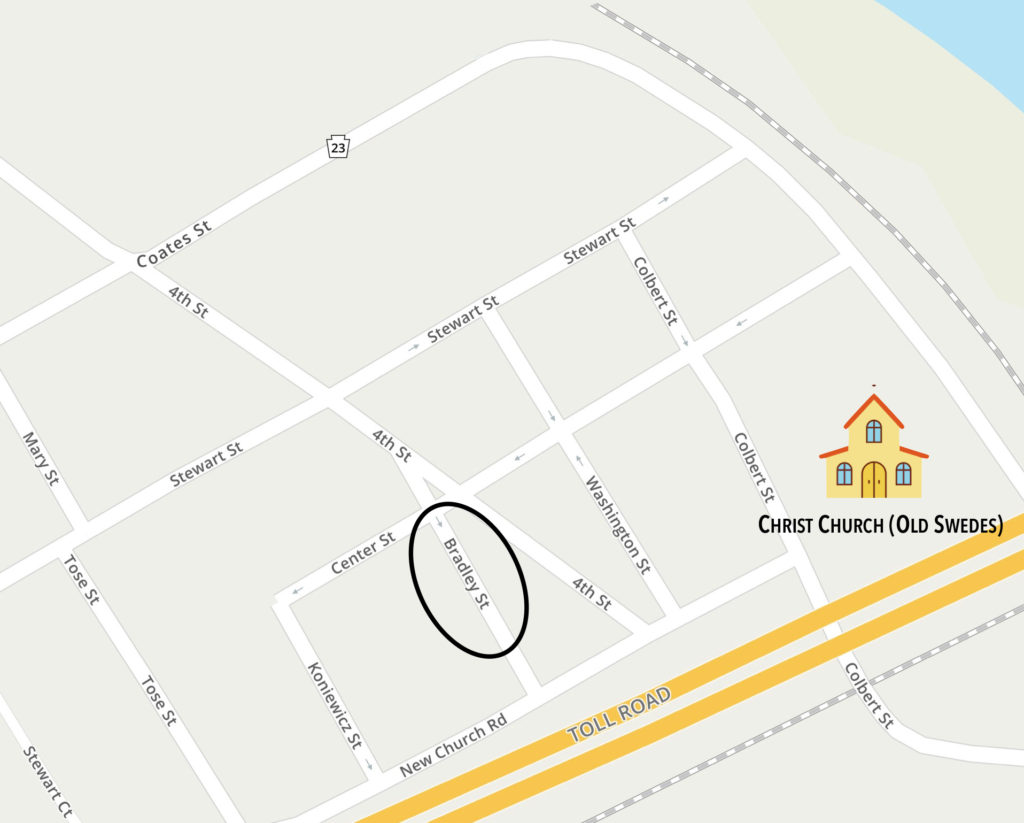By Ed O’Dybicz 12 MAR 1986
March 17 is St. Patrick’s Day and this observance recalls a wee bit of Irish history.
In the Swedesburg section of Upper Merion Township, there is a little road not more than a block long, between East Fourth Street and New Church Road, called “Bradley Street.”
When Francis Bradley came to America from Ireland, he never thought that someday, a street would be named for him, a working man.
Bradley’s popularity among the early Irish immigrants stemmed from his zealous interest in their welfare. He was always ready to assist in any of their endeavors and his confidence, ability and religious fervor inspired his people towards betterment.
Bradley Street was one of several which were laid out in 1837 by Andrew Keiger, sons of George Keiger, a German immigrant and soldier of the American Revolution, when he planned the gridiron of streets in Swedesburg.
In the 1850 census of Upper Merion, records show Bradley was a ‘quarryman’. His family included Mary, his wife, and five children, Francis Elizabeth, Bridget, Joseph, and Edward.
Bradley was one of several hundred Irish immigrants who settled in Upper Merion in the late 1820s. Nearly half of the township’s population of 2,238 inhabitants in 1850 were either native Irish or descendants.
What King of Prussia is today, Swedesburg was century and quarter ago to the struggling Irish immigrant – a thriving center to make a living.
The Irish settler, before becoming acquainted with the environment, usually knew someone by reference and made his first stop at the stage coach hotel at the corner of Center and Colbert Streets in Swedesburg.
Work was plentiful for the hardworking Irish immigrant. Nearby were the Rambo Lime Quarries, the Reading Railroad, the canal, the Chester Valley Railroad, several shops, the Schuylkill riverfront, and other industries.
The village was well oriented businesswise. There were four blacksmith shops, three wheel wright shops, a marble shop and a host of carpenters. No one walked barefoot in Swedesburg since there were six shoemakers. In those days, Swedesburg also had farms, that is before the coming of the Pennsylvania Railroad which took a wide swath of ground. The Irish were proud of their farms, especially raising cabbage, which carried them through one of the greatest periods of this nation.
The various work rolls examined looked like the membership lists in the Ancient Order of Hibernians. Names included Shahin (Sheehan), Welsh, McNulty, Pendergasy, Fair, Murray, O’Cain, Doyle, Flood, McGrory, Catin, Graham, Conorton (Connorton), Riley, Kehoe, McAshian, Bradley, Donlon, Murphy, Mulvy (Mulvey), McSherry, Rodgers, Dunn, Fullerton. Tracy, Leary, Kennedy, Fitzgerald, McGrath, Carlin, Conroy, Rogan, Parker. Kelly, Daily (Dailey), McCloskey and Faughan.
Also, Toland, McNamee. Nolan, Golaher (Gallagher), Hamill. McGarvey, Ryan, Wilson, Harney, Hainey, Nally, Heslin, Boyle, Crawford, O’Braun, Mahanee, Kelsy, Dempsey. Farrey, Brian, McWade, Mehan, Kearnee, Burns and Canning.
Also, Eigens, Moore, Tague, McVey, Mulligan, Boyd, Mullen, Kenan, Fitzsimmons, Briston, Nugent, Mooney, Williams, Butler, Tinkler, Stephens, McMullen, Craig, Taggeert, O’Harrah, Crosby, McGork, Develin, Macuan, Cannon, Doolin, Crowley, Farley, Lochlin, Lennon, McPherson, Scanlin, Foley, Jordon, Besmond, McCormick, Mulvany, Danlaney, Shealds, Colwell and Magee.
Also, McAfee, Keating, McGonical, Mahollen, McGinley, Skully, Kilby, Stewart, Mogee, Carr, McCaw, McLane, Collins, Long, Baliff, McAlister, McKever, McDade, McKenny, McCaughlin, McCoy, McNeil, Waters, Faigin, McCollum, Broday, Landley, McDennon, McAdams, Maloney, McKernan, Mulvihill, Travers, Kane, McQuaid, McDermott, O’Connor, Cameron, Lanigan, McCabe, Finnin, Saly, Fineran, Farrell. Finigan, Jeffers, Lawless, Diamond, Divinney, Lawlor, Lynch, Crowe, Slemmer, Bush, Blake, Gear, DeWan and other.


